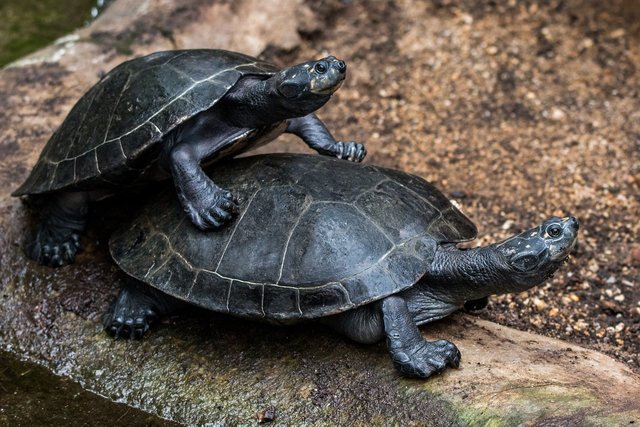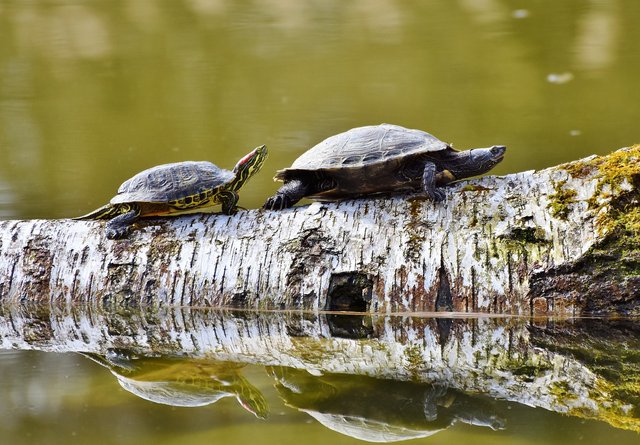Turtles and recognize the breeding process
Turtles are amphibians that reproduce in unique and sometimes complex ways, depending on the species. The breeding process in turtles involves several important stages that ensure their successful reproduction.
Turtle Breeding Process:
Mate Search: Turtles usually look for partners to breed with. They may perform special rituals to attract a mate, including certain body movements and vocalizations.
Fertilization: Once a turtle mate has been found, the reproduction process begins in water or on land depending on the species. In some species, fertilization occurs internally within the female's body, whereas in others, the eggs are laid in the external environment to be brooded by sunlight.
Egg Hatching: Female turtles usually look for a safe and suitable place to lay their eggs. They look for moist places, such as beaches or sandy flats, where the eggs will remain protected and hydrated during the hatching process.
Incubation: Once the eggs are laid, they undergo an incubation period that can last from several weeks to several months depending on the environmental temperature. Higher temperatures tend to speed up the incubation process, while lower temperatures can slow it down.
Come Out of the Egg: After the incubation period is over, the baby turtles, also called 'turtle babies', begin to hatch from their eggs. They use a special structure called a 'chin' to help them break egg shells.
Struggle to Water: The hatched turtle cubs must then struggle to reach water, where they can grow and develop better. This journey is often dangerous as they are vulnerable to predators.
Development and Growth: After reaching an aquatic habitat, baby turtles begin to grow and experience further physical and behavioral development. They may take several years to reach sexual maturity and can begin the reproductive process on their own.
Turtle Adaptations in Breeding:
Turtles have developed various adaptations that allow them to be successful in their breeding process. Some of these include:
- Oviparity: The ability to lay eggs, allowing them to reproduce in a variety of environments.
- Movement: Turtles often move in search of places to lay eggs, increasing the chances of survival of the young turtles.
- Popularity: Some turtle species live in large groups which helps protect the eggs from predators and creates optimal conditions for incubation.
Overall, the breeding process of turtles is a fascinating example of an animal's adaptation to its environment resulting in diverse and unique reproductive strategies. By understanding this process, we can better appreciate the diversity of nature and the importance of protecting turtle habitats for the future survival of their species.


Upvoted. Thank You for sending some of your rewards to @null. It will make Steem stronger.